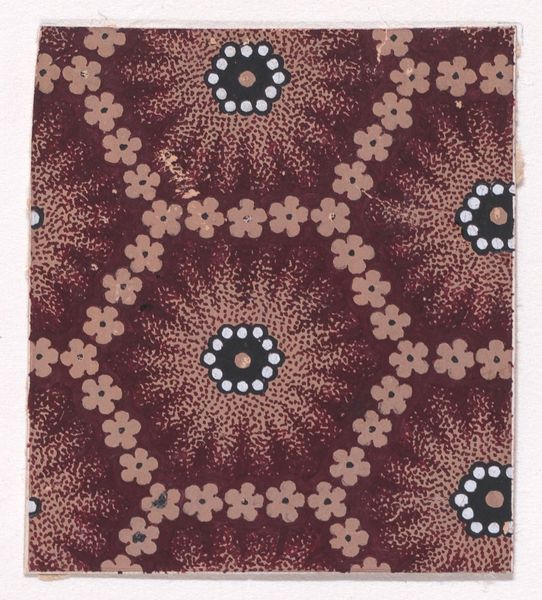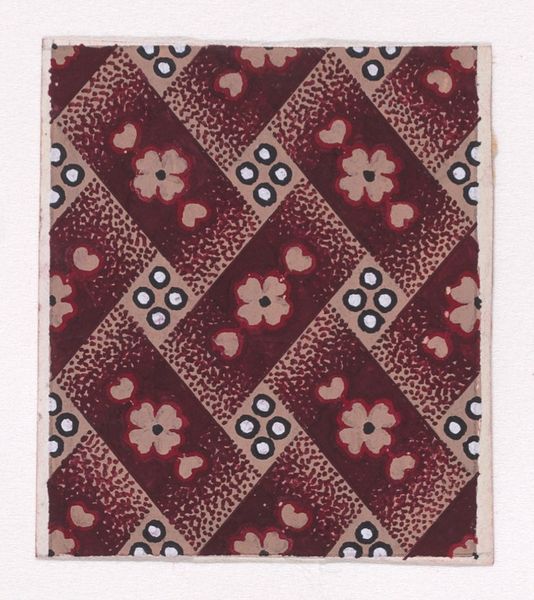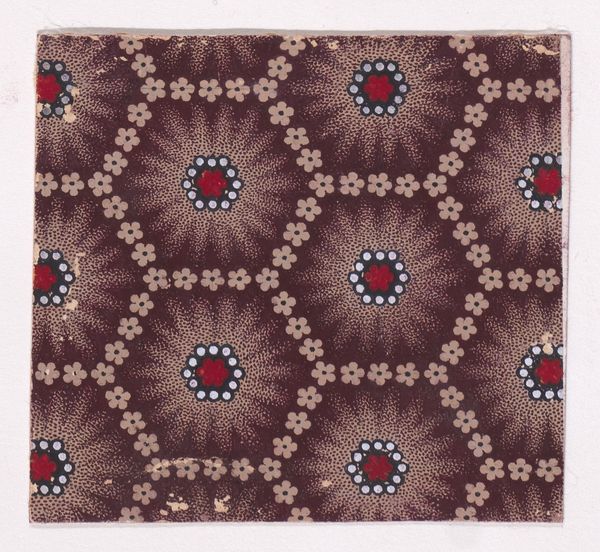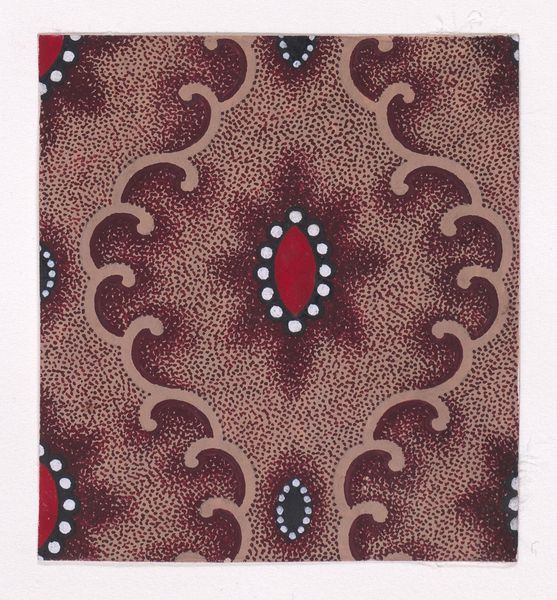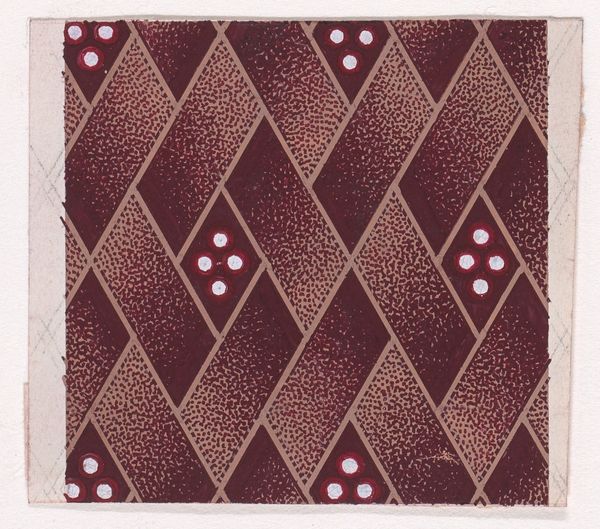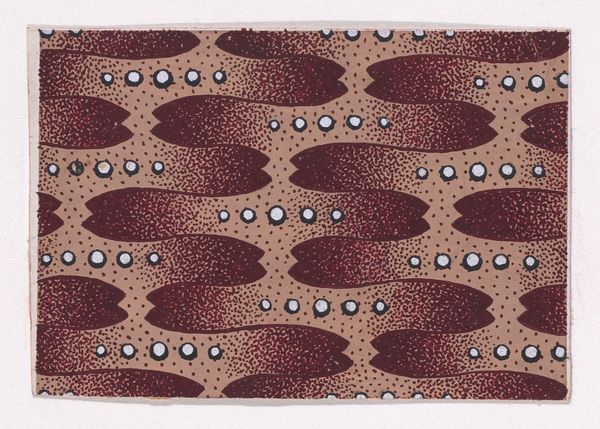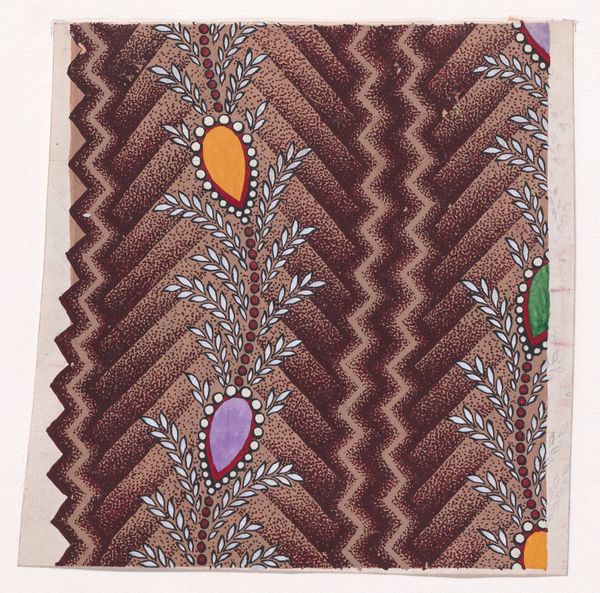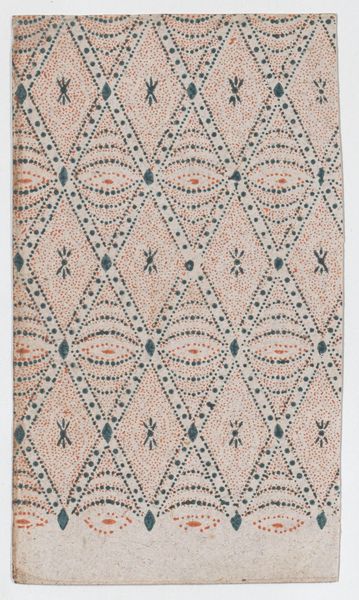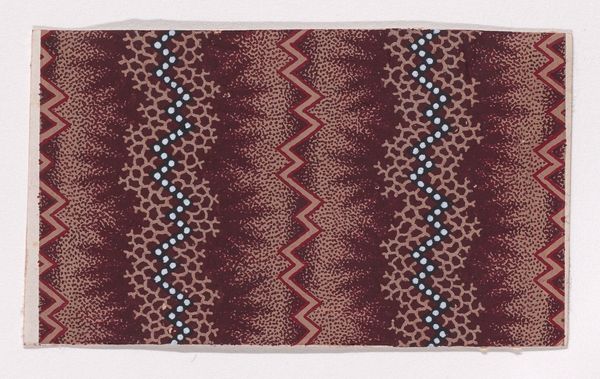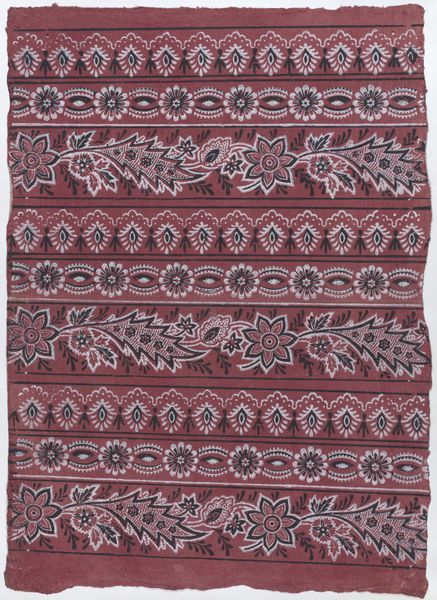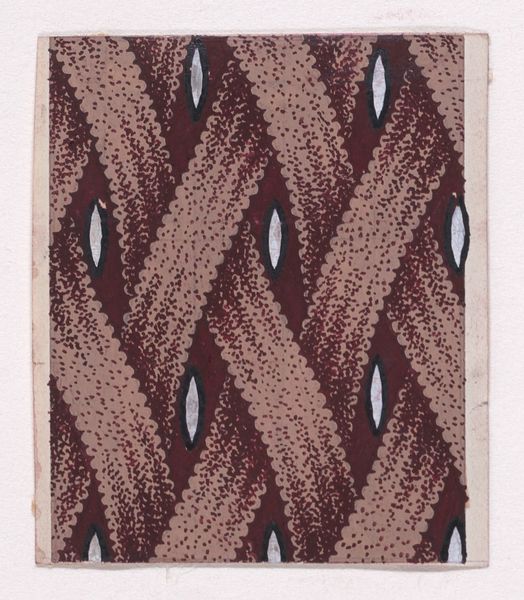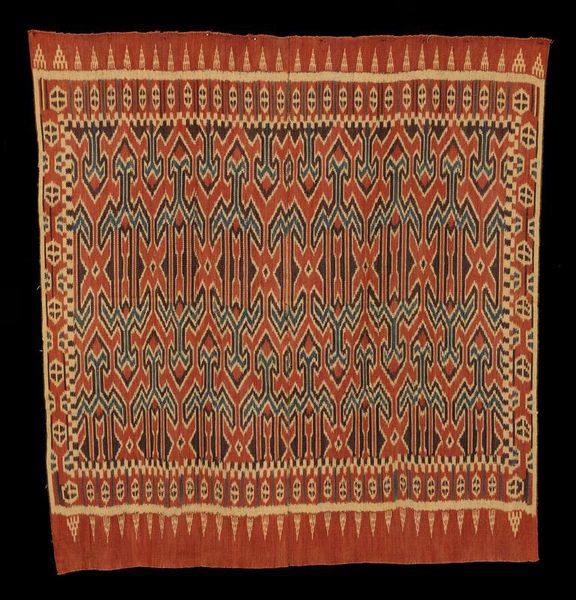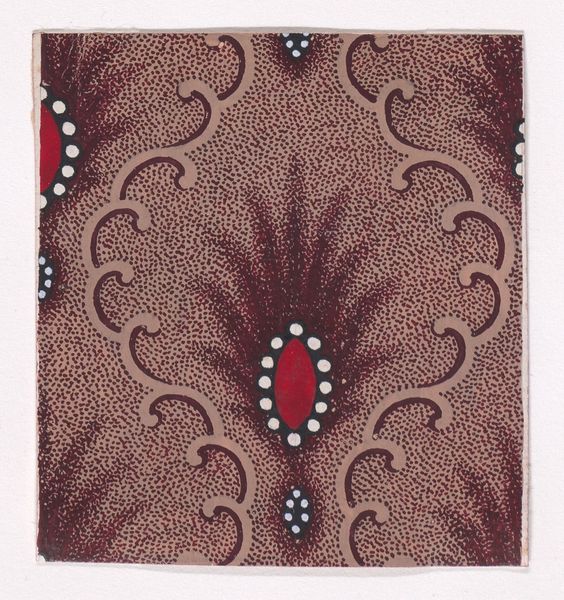
Textile Design with Horizontal Rows of Undulating Garlands and Zig-Zagging Stiff Branches Flanked by Rosettes of Pearls Over a Stippled Background 1840
0:00
0:00
drawing, print, textile
#
drawing
# print
#
textile
#
geometric pattern
#
pattern design
#
geometric
#
repetition of pattern
#
pattern repetition
#
textile design
Dimensions: Sheet: 2 1/16 × 1 7/8 in. (5.2 × 4.7 cm)
Copyright: Public Domain
Editor: Here we have an anonymous textile design from 1840. The full title is "Textile Design with Horizontal Rows of Undulating Garlands and Zig-Zagging Stiff Branches Flanked by Rosettes of Pearls Over a Stippled Background." The meticulous details makes it hard to look away. How do you see this design speaking to its time? Curator: It is important to examine this design through its means of production and consumption. We can look at this and ask: what material processes would have been required to reproduce it on a large scale? The density of the pattern, that stippled background… these details likely represent significant labor. Were these textiles machine-printed, or were blocks carved and pressed by hand? Editor: I hadn't considered that. The repetition really disguised the potential hand-made element, but knowing that changes how I see the texture. Curator: Exactly! The materials themselves can tell us a great deal, too. What kind of dyes would have been available? Where would the fabric have been sourced? Examining the social context of textile production during the 1840s sheds light on labor practices, trade routes, and even social hierarchies. We might even question who had access to such intricately patterned fabric. Is it for the elite? For everyday use? Editor: It's easy to forget that even something seemingly decorative reflects broader social structures and the very real labor behind it. Curator: Precisely. It urges us to look beyond the purely aesthetic and appreciate the interconnectedness of art, labor, and consumption. Editor: I’ll definitely think more about production next time! Thanks for pointing this out. Curator: Likewise, thinking about how consumption of such artworks affected production and labor will further develop how I examine art.
Comments
No comments
Be the first to comment and join the conversation on the ultimate creative platform.
